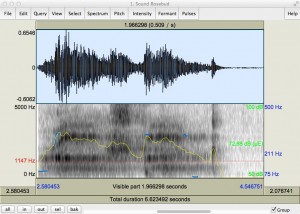This week I have been quite busy conducting interviews for my hybrid pedagogy promotion project, and one aspect that came up frequently during those interviews was my interviewee’s particular reservation against using the microblogging platform Twitter for pedagogical purposes. Most interviewees said they don’t (like to) use Twitter because it would sent their teaching into a tailspin, thereby making it more difficult to administer the students’ learning experience.
I can certainly understand the attitude. Once we go hybrid with our pedagogy, we introduce additional spaces into the learning experience and it can become quite overwhelming not only to administer the content that students produce on Twitter, but also to use that content for assessment, not to mention that in every class there will be students who don’t use social media tools at all (at least that has been my experience so far). So, from that angle, I can surely understand how Twitter can be quite intimidating at first.
However, a couple of days ago I found an email in my inbox from a research-sharing website which contained a paper on the rhetoric of hashtags by Daer, Hoffman, and Goodman, titled “Rhetorical functions of hashtag forms across social media applications,” and here I can certainly see the merit of using Twitter in the classroom for critical thinking exercises as well as for practicing analytical skills. For those of you who aren’t familiar with Twitter, hashtags are used to connect Twitter messages to larger conversations. Hashtags are words or unspaced phrases that follow the number sign (#), and they can be placed anywhere in a tweet. But beyond its ability to construct a conversation space, a hashtag can also tell users in each instance a thing or two about the contextual configuration of that space. In other words, by looking at the hashtag we can draw inferences as to whether the conversation space was created to inform, identify, entertain, critique, rally, or maybe motivate. Check out a couple of hashtags below and think about the underlying purpose of the conversation space in each case:
#geeiamsubtle
#firstworldproblems
#goodtoknow
#standyourground
#digped
For a composition class or a critical thinking class, in which questions of audience awareness and purpose are important topics of discussion, I can certainly see the benefit of using Twitter. Surely, Twitter can also teach us a thing or two about the advantages of brevity in writing, but this only goes so far. I find that Twitter would work better for analysis exercises. I imagine that an activity could be that students choose a hashtag, identify its purpose, and then analyze a set of tweets in relation to the extent to which they fulfill the purpose of the conversation space. In order to capture the tweets and turn the activity in for assessment, students could use the free webtool Storify, which allows users to collect and curate material from the internet.
I will certainly try this activity out in the future. If you think the activity is interesting, and you get a chance to do it, then please comment and let me know how it went.
Cheers,
Thomas
